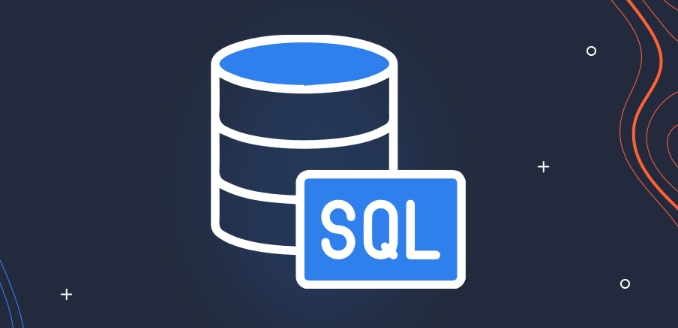To migrate data efficiently with SSIS, properly set up data sources and destinations by configuring OLE DB providers, using connection managers wisely, testing individual sources, and verifying data type mappings. Next, optimize data flow performance by using fast load options, adjusting batch sizes, avoiding unnecessary transformations, and utilizing fast drives for buffer storage. Finally, handle errors and logging effectively by redirecting error outputs, using selective logging for key events, and maintaining a custom logging table for auditing and troubleshooting purposes.

Migrating data efficiently with SQL Server Integration Services (SSIS) is something a lot of developers and DBAs deal with when moving or upgrading systems. SSIS gives you a solid framework for handling complex data flows, but knowing how to use it effectively makes all the difference — especially when dealing with large volumes or tight deadlines.

Set Up Your Data Sources and Destinations Properly
One of the most overlooked steps in SSIS is setting up your source and destination connections correctly. This might sound basic, but getting this right upfront can save you headaches later.
- Make sure your OLE DB providers are configured properly for each database.
- Use connection managers wisely — don’t hardcode server names or credentials unless absolutely necessary.
- If you're pulling from multiple sources (like Oracle, Excel, or flat files), test each one individually before combining them.
A common mistake is assuming that all data types will map automatically between systems. They often don't. Spend time checking how data types translate — for example, a VARCHAR(MAX) in SQL Server might not be compatible with what SSIS expects from a CSV file.

Optimize Data Flow Performance
The Data Flow Task is usually where most of the processing happens, so optimizing this part is key to fast migrations.
- Use fast load options when writing to SQL Server destinations. Enabling "Table or view – fast load" can drastically improve performance compared to row-by-row inserts.
- Batch size matters — tweak the "Rows per batch" and "Maximum insert commit size" settings. A good starting point is 10,000 rows per batch, but adjust based on your system's memory and disk I/O.
- Avoid unnecessary transformations — if you don’t need to modify data mid-flow, skip components like Derived Column or Data Conversion unless they’re essential.
Also, consider using buffer temp storage on a fast drive if your data flow uses a lot of in-memory operations, like sorts or lookups. This helps prevent bottlenecks during large transfers.

Handle Errors and Logging Like a Pro
No matter how clean your data looks, errors will happen. SSIS has built-in tools to help you catch and handle them without breaking the whole package.
- Enable error output redirection on your source or transformation components. This lets you log bad rows instead of failing the entire process.
- Use flat file or SQL Server logging to keep track of what’s happening during execution. You’ll thank yourself later when debugging issues or proving compliance.
- Consider adding a custom logging table to capture start/end times, row counts, and error messages. It makes auditing easier and helps spot trends over time.
One thing many people miss: logging too much can actually slow things down. Don’t log every single event unless you really need to. Stick to key events like OnError, OnWarning, and OnPostExecute for most packages.
That’s basically it. SSIS isn’t magic, but when used right, it can make data migration feel almost effortless. Just remember to plan ahead, test early, and optimize where it counts.
The above is the detailed content of Efficiently Migrating Data with SQL Server Integration Services (SSIS). For more information, please follow other related articles on the PHP Chinese website!

Hot AI Tools

Undress AI Tool
Undress images for free

Undresser.AI Undress
AI-powered app for creating realistic nude photos

AI Clothes Remover
Online AI tool for removing clothes from photos.

ArtGPT
AI image generator for creative art from text prompts.

Stock Market GPT
AI powered investment research for smarter decisions

Hot Article

Hot Tools

Notepad++7.3.1
Easy-to-use and free code editor

SublimeText3 Chinese version
Chinese version, very easy to use

Zend Studio 13.0.1
Powerful PHP integrated development environment

Dreamweaver CS6
Visual web development tools

SublimeText3 Mac version
God-level code editing software (SublimeText3)
 How to add a comment to a table or column in SQL?
Sep 21, 2025 am 05:22 AM
How to add a comment to a table or column in SQL?
Sep 21, 2025 am 05:22 AM
UseCOMMENTONCOLUMNorALTERTABLEwithCOMMENTtodocumenttablesandcolumnsinSQL;syntaxvariesbyDBMS—PostgreSQLandOracleuseCOMMENTON,MySQLusesCOMMENTinCREATE/ALTERstatements,andcommentscanbeviewedviasystemtableslikeINFORMATION_SCHEMA,butSQLitelackssupport.
 How to use the SOUNDEX function for phonetic searches in SQL?
Sep 21, 2025 am 01:54 AM
How to use the SOUNDEX function for phonetic searches in SQL?
Sep 21, 2025 am 01:54 AM
The SOUNDEX function converts text into a four-character code representing pronunciation, adds three digits to the first letter, ignores vowels and specific letters, and maps consonants with similar pronunciations to the same number, realizing pronunciation-based search. For example, Smith and Smythe both generate S530, and names with similar pronunciations can be found through WHERESOUNDEX(last_name)=SOUNDEX('Smith'). Combined with the DIFFERENCE function, it can return a similarity score of 0 to 4, filter the results of pronunciation close, which is suitable for dealing with spelling differences, but has limited effect on non-English names, and performance optimization needs to be paid attention to.
 How to get the last inserted ID in SQL?
Sep 20, 2025 am 04:40 AM
How to get the last inserted ID in SQL?
Sep 20, 2025 am 04:40 AM
TogetthelastinsertedID,usedatabase-specificfunctions:MySQLusesLAST_INSERT_ID(),PostgreSQLusesRETURNINGclause,SQLServerusesSCOPE_IDENTITY()orOUTPUT,andSQLiteuseslast_insert_rowid();alwayscallrightafterINSERTtoensureaccuracy.
 How to add a UNIQUE constraint to a SQL column?
Sep 24, 2025 am 04:27 AM
How to add a UNIQUE constraint to a SQL column?
Sep 24, 2025 am 04:27 AM
When using CREATETABLE, add UNIQUE keyword or use ALTERTABLEADDCONSTRAINT to add constraints to existing tables to ensure that the values ??in the column are unique, and support single columns or multiple columns. Before adding, you need to ensure that the data is not duplicated. You can delete it through DROPCONSTRAINT, pay attention to the syntax differences between different databases and NULL values.
 How to get the last day of the month for a given date in SQL?
Sep 18, 2025 am 12:57 AM
How to get the last day of the month for a given date in SQL?
Sep 18, 2025 am 12:57 AM
Use the LAST_DAY() function (MySQL, Oracle) to directly obtain the last day of the month where the specified date is, such as LAST_DAY('2023-10-15') to return 2023-10-31; 2. SQLServer uses the EOMONTH() function to achieve the same function; 3. PostgreSQL calculates the end of the month through DATE_TRUNC and INTERVAL; 4. SQLite uses the date function to combine 'startofmonth', '1month' and '-1day' to obtain the results.
 How to find the minimum value with SQL?
Sep 21, 2025 am 01:40 AM
How to find the minimum value with SQL?
Sep 21, 2025 am 01:40 AM
TheMIN()functionretrievesthesmallestvaluefromaspecifiedcolumn.UseitinaSELECTstatementwithoptionalWHEREorGROUPBYclausestofilterorgroupdata,suchasfindingthelowestsalary,earliestdate,orfirstalphabeticalname.
 How to generate a GUID or UUID in SQL?
Sep 19, 2025 am 02:41 AM
How to generate a GUID or UUID in SQL?
Sep 19, 2025 am 02:41 AM
SQLServerusesNEWID()togenerateGUIDs;2.MySQLusesUUID()forversion1UUIDs;3.PostgreSQLusesgen_random_uuid()afterenablingpgcrypto;4.SQLitelacksbuilt-insupport,sogenerateUUIDsinapplicationcode.
 How to use a subquery in the WHERE clause in SQL
Sep 21, 2025 am 01:26 AM
How to use a subquery in the WHERE clause in SQL
Sep 21, 2025 am 01:26 AM
AsubqueryintheWHEREclauseallowsfilteringdatabasedondynamicresultsfromanotherquery,commonlyusedwithoperatorslike=,IN,NOTIN,EXISTS,orNOTEXISTS,wherethesubqueryrunsfirstanditsresultinfluencestheouterquery’soutput;itisessentialthatscalarsubqueriesreturne




